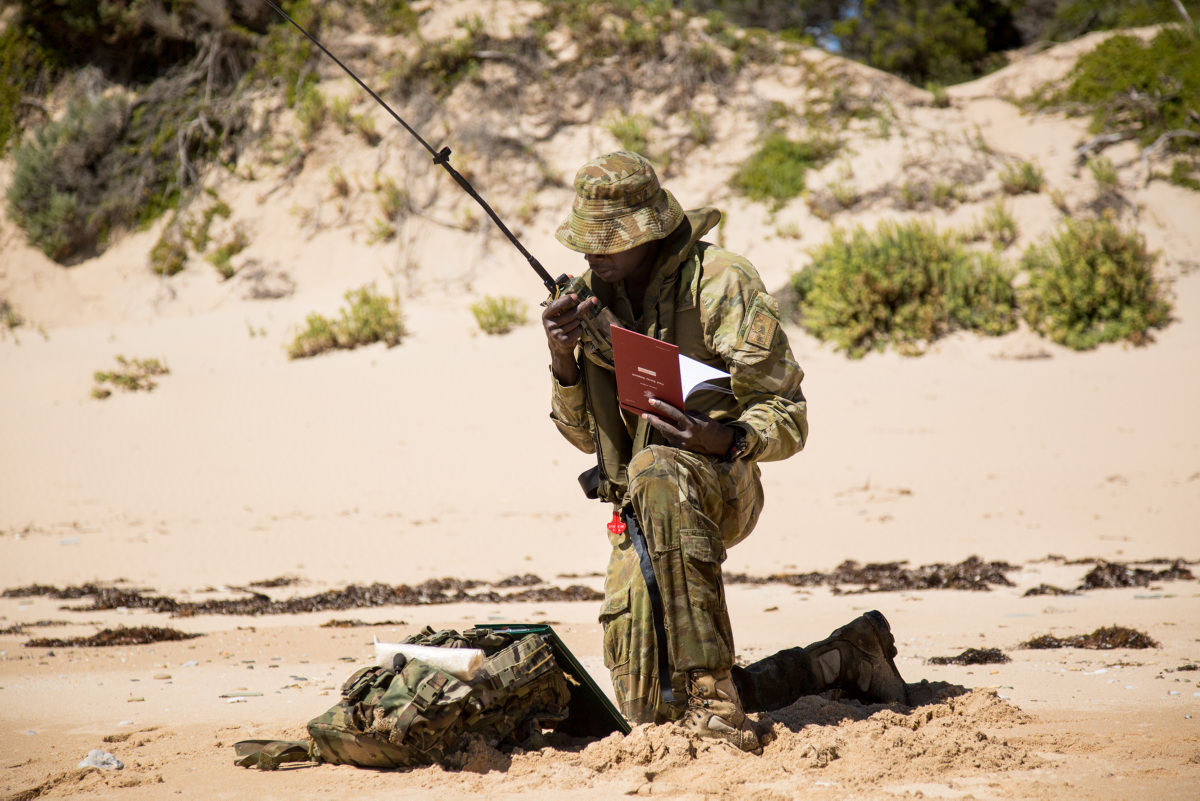By David Beaumont.
Logistics in War has contended with the topic of training, and the preparation of logisticians for a variety of operational and garrison possibilities. Readers have been the beneficiary of insights – but also asked poignant questions – in posts from several senior logisticians of the Australian Defence Force, including the Commander of Joint Logistics Command Major-General David Mulhall and his former deputy Air Commodore Hayden Marshall which focus on professionalisation. Contributors from the US Army’s Logistics University, Chris Paparone and George Topic, have also described operational complexities and new training requirements that should be attended to as a consequence. Others have been more specific to the challenge of training such as Michael Lane who describes the need for logisticians to be better prepared for the most likely events they will face. New proficiencies and the development of ‘commercial acumen’ are desired by author Carney Elias, and methods are provided accordingly.
The individual training regime for logisticians as they progress through their careers should be naturally interesting to a military reader, especially the logisticians. Numerous authors have argued that the ‘revolution in logistics’ which began in the US Army in the wake of the 1991 Gulf War was the beginning of an immense shift in the training paradigm for the military logistician. Lessons from this conflict filtered into allied armies and defence forces, as did an increased desire to leverage experience from the commercial sector with the deregulation of national economies in Western countries of the time. Now these same militaries face an uncertain future where the regularity of operations in the Middle-east is diminishing as the focus for the preparation of soldiers and officers. Most are undertaking reviews of training and education to accommodate new pressures and advocate for a change in training direction. This scenario now applies to the Australian Army, and the training of its logistics officers.
The Australian Army’s Suite of Logistics Officers Courses (SOLOC) has been the focus of successive reviews and training needs analyses since the 1996 formation of the Army Logistics Training Centre (ALTC). These reviews have examined the content of courses through a range of analytical methods and have prompted modernisation accordingly. At other times, substantial changes to organisational responsibilities for training logistics officers have resulted in necessary adaptions to the purpose, structure and learning objectives of these courses. These changes have included the disestablishment of Integrated Logistics Division (ILD) at ALTC, and the subsequent consolidation of all logistics officer training at the Army School of Logistics Operations in 2004. This move reflected a desire to move from the goal of training for integrated logistics, complemented by technical training conducted at Corps schools, to a model which emphasised training for ‘combat service support’ or ‘logistics’ operations. There is no clearer sign of this focus than the parallel and shared training conducted between the Logistics Officers Intermediate Course and the Combat Officers Advanced Course, the premier tactics course of the Australian Army.
The Ryan Review, launched in 2016 and twenty years after the formation of ALTC, argued that the Army’s individual training systems are ‘world-class’ when contemporary operational and force generation requirements were considered. The current focus on CSS and logistics operations in the SOLOC has certainly proven to be effective in preparing Army’s logistics officers for professional challenges in both operations and garrison. This view is also reflected on the perceptions revealed in analyses conducted of the SOLOC. The 2017 evaluation of the SOLOC contended that most respondents involved in the qualitative assessment of courses believed that course content was satisfactory, and that training was generally hitting the mark. Earlier reviews also supported the view that the SOLOC was providing skills and knowledge relevant to the workplace despite various content and scheduling issues, and occasional concerns with assessment methods. These observations confirm that the SOLOC is sufficient for Army, and the ADF’s, training requirements.
It has, however, been fifteen years since the SOLOC was reviewed from the basis of ‘first principles’. Since ASLO’s creation, logistics officer courses have been modified idiosyncratically to reflect new requirements. This has seen a diverse range of course content managed into the existing framework, complicating the training of officers at the O2 and O3 ranks and compressing the time available for basics to be explored in depth. There is disagreement as to the focus of each course, whether it is on the basis of a ‘level of war’ explored, or the unit, formation or organisation each is to focus upon. Some Corps have added modules of training the courses conducted centrally to address perceptions of technical deficiency among logistics officers. There are now new needs that the Australian Army logistician must be prepared for as Army undergoes a significant transformation in its combat capability – as I wrote in a major paper and subsequent post on contemporary training challenges. But most importantly, and as the Ryan Review found for training more generally, the absence of a coherent strategic approach to the training of logistics officers prevents the overcoming of potential, and some real, proficiency and education gaps.
Logistics in War is seeking contributions on the topic of individual training of logisticians. Although the primary area of interest for this future series of posts is the Australian Army logistics officer, any contributions would be warmly received. You may choose to examine training requirements, future technology, the training context or different problems and proposed solutions. International contributions are certainly desired. Many of the problems in training experienced by the Australian Army are problems shared elsewhere, and we can all learn from one another. If you are a soldier or officer of a like-minded military, or have a considered view on the topic, please contact via logisticsinwar@outlook.com . Contributions are desired by the end of August with posts to be published soon after. Thanks, in advance, for your interest!
David Beaumont is a serving Australian Army officer and the views here are his own.
